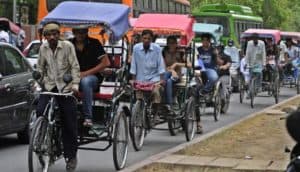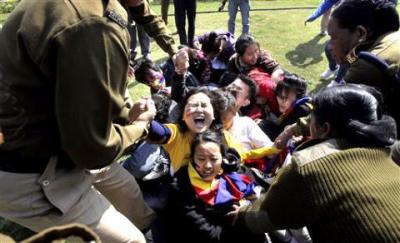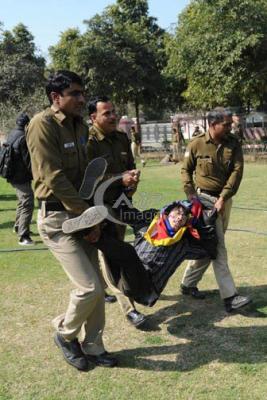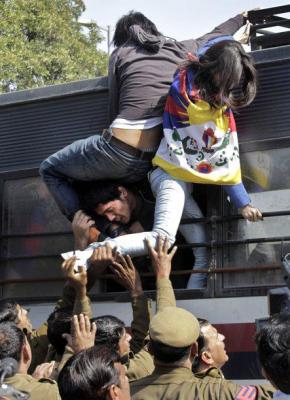If Mr. Dinesh Singh were a Pokémon, he would surely be from the same family as the cumbersome and exponentially lazy Slowpoke. Like his far cuter counterpart, the Vice Chancellor of Delhi University took a while to wake up and realize that he was digging his own grave by not paying heed to any of the furious questions hurtled at him by the agitated youth studying in the capital. With issues such as safety, accommodation, and elections hanging by an incredibly thin thread, Dinesh Singh finally took matters into his own, highly slippery hands and addressed the students on 1st September.
If replying to tricky questions was an art, none could have been better than our beloved Vice Chancellor. Every controversial question was tackled with a diplomatic smile and a not-so-subtle subject change. Since safety was of utmost importance, girls were promised a hostel with free travel facilities as well as the installation of CCTV’s all around the campus. Looks like programmes such as Big Boss are not enough to satisfy the TRP-hungry show producers and their equally bored audience. Next in line is a peek into the lives of the young and frustrated DU Students.
With some great ideas in the pipeline, such as mobile canteens and easy access to Wi-Fi, it is quite a shame that this pipe is similar to Delhi’s sewage line constructed during the colonial times; untouched and never to be modified. Dinesh Singh was obviously daydreaming when he announced that disabled-friendly modes of transport would be provided in the form of DTCs and Metros, forgetting that the college campus itself would still be a nightmare for those facing difficulties. He also seems to have taken Dalrymple’s description of Delhi as the city of Djinns quite seriously, with his strong belief in an invisible hostel that has already been magically constructed for girls in South Campus, in a location that shows it is still clearly under-construction.
If I were bestowed with the honor of being made the Vice Chancellor of DU, I would dye my hair and get a face-lift to make sure my dynamic audience has its eyes glued on me instead of snoring at the back. Then the words that come out all airbrushed from my lips might as well be ignored. While mentioning the proposition that the football teams in DU would be getting a special training in New Zealand, I wouldn’t add the extra advantage being offered to the women’s soccer team being sent free of cost. This hidden information exists for the sole reason that, brilliant though the opportunity sounds, Dinesh Singh conveniently forgot to mention that the facilities for women’s soccer are relatively new and still under development in many colleges. So unless there was a secret agreement between New Zealand and India regarding the exchange of their excess population of sheep in return for female textile workers disguised in soccer cleats and sweat absorbing shorts, It is hard to see how this would boost the morale of rising sport stars without motivating them to train first.
My humble request to our Vice Chancellor would be for him to invest in an expensive hearing aid, so that his ears don’t fail him when questions regarding various important issues are shot at him. However, if I were in his place I would definitely arm myself with a shield, just in case one well-aimed arrow leaves me struggling to form coherent sentences.

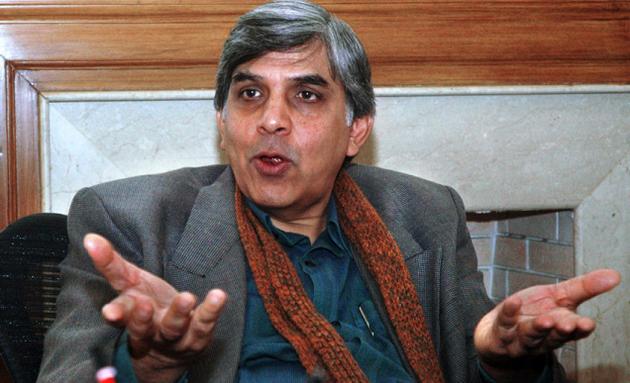
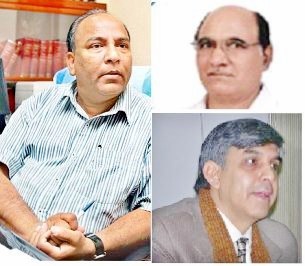


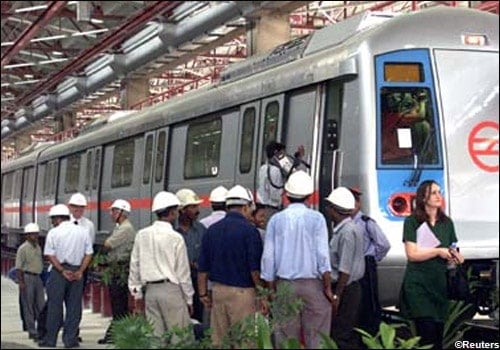
 Picture source: Reuters
As the sun rose over the country this morning, a large part of North India found itself in the middle of the worst power outage in ten years. Citizens of New Delhi, Punjab, Haryana, Rajasthan, Uttar Pradesh, Uttarakhand, Himachal Pradesh and Jammu & Kashmir were left with with no power supply in their homes to carry out day to day activities. Majority of the nation was especially brought to a standstill as all other activities halted due to lack of electricity. Inter- state transport, water supply and public transport faced the brunt of this power cut.
In New Delhi, the metro services suffered as stations were locked out and people were left stranded. Looking closely at the plight of DU Students, as the Delhi Metro (an impetus for commuting) had come to an abrupt halt- students had to rely on over- crowded busses, auto rickshaws or cars on Delhi roads, which already happened to be clogged with traffic.
Adding to their misery, once the students did make the perilous journey to college they discovered that classes had either been cancelled or postponed. “It was horrible, in fact horrible is an understatement. We were squished in the over crowded bus, a friend of mine was on the verge of crying. We had to get off halfway and take an auto- only to find out that classes had been cancelled.” said Riya Anna Kuruvilla, a first year student from Hindu college who had to travel from Dwarka to North Campus.
“I took the metro for granted as I used to travel by it since day one, today I had to take a bus. Being new to this route it was tough for me, but owing to the power cut, I could discover an alternate way of commuting!” Shreya Mudgil, a first year English Hons. student from Bharti College added.
Thanks to the prowess of the authorities most of the electricity supply did return soon bringing life back to normal; however the morning was a bit of a jolt to the whole of North India.
Deepali Datta a first year student from LSR made an uncanny observation she said, “An interesting side of Delhi emerged today as everybody became everybody’s Google Map, people gave way to pedestrians despite faulty traffic lights. Some students like me, did miss out on the attendance for the first lecture, but the lesson learnt was worth it, nothing can stop a city like Delhi. One grid collapsed but another emerged- the People’s Grid.”
A pat on the back to all Delhiites- students, parents, office goers alike- who did made it to their respective duties on time and did not abort any of the city’s activities! And DU students who did manage to get the whole day’s attendance deserve special mention here, don’t they?
Anugrah Gopinath
Picture source: Reuters
As the sun rose over the country this morning, a large part of North India found itself in the middle of the worst power outage in ten years. Citizens of New Delhi, Punjab, Haryana, Rajasthan, Uttar Pradesh, Uttarakhand, Himachal Pradesh and Jammu & Kashmir were left with with no power supply in their homes to carry out day to day activities. Majority of the nation was especially brought to a standstill as all other activities halted due to lack of electricity. Inter- state transport, water supply and public transport faced the brunt of this power cut.
In New Delhi, the metro services suffered as stations were locked out and people were left stranded. Looking closely at the plight of DU Students, as the Delhi Metro (an impetus for commuting) had come to an abrupt halt- students had to rely on over- crowded busses, auto rickshaws or cars on Delhi roads, which already happened to be clogged with traffic.
Adding to their misery, once the students did make the perilous journey to college they discovered that classes had either been cancelled or postponed. “It was horrible, in fact horrible is an understatement. We were squished in the over crowded bus, a friend of mine was on the verge of crying. We had to get off halfway and take an auto- only to find out that classes had been cancelled.” said Riya Anna Kuruvilla, a first year student from Hindu college who had to travel from Dwarka to North Campus.
“I took the metro for granted as I used to travel by it since day one, today I had to take a bus. Being new to this route it was tough for me, but owing to the power cut, I could discover an alternate way of commuting!” Shreya Mudgil, a first year English Hons. student from Bharti College added.
Thanks to the prowess of the authorities most of the electricity supply did return soon bringing life back to normal; however the morning was a bit of a jolt to the whole of North India.
Deepali Datta a first year student from LSR made an uncanny observation she said, “An interesting side of Delhi emerged today as everybody became everybody’s Google Map, people gave way to pedestrians despite faulty traffic lights. Some students like me, did miss out on the attendance for the first lecture, but the lesson learnt was worth it, nothing can stop a city like Delhi. One grid collapsed but another emerged- the People’s Grid.”
A pat on the back to all Delhiites- students, parents, office goers alike- who did made it to their respective duties on time and did not abort any of the city’s activities! And DU students who did manage to get the whole day’s attendance deserve special mention here, don’t they?
Anugrah Gopinath

